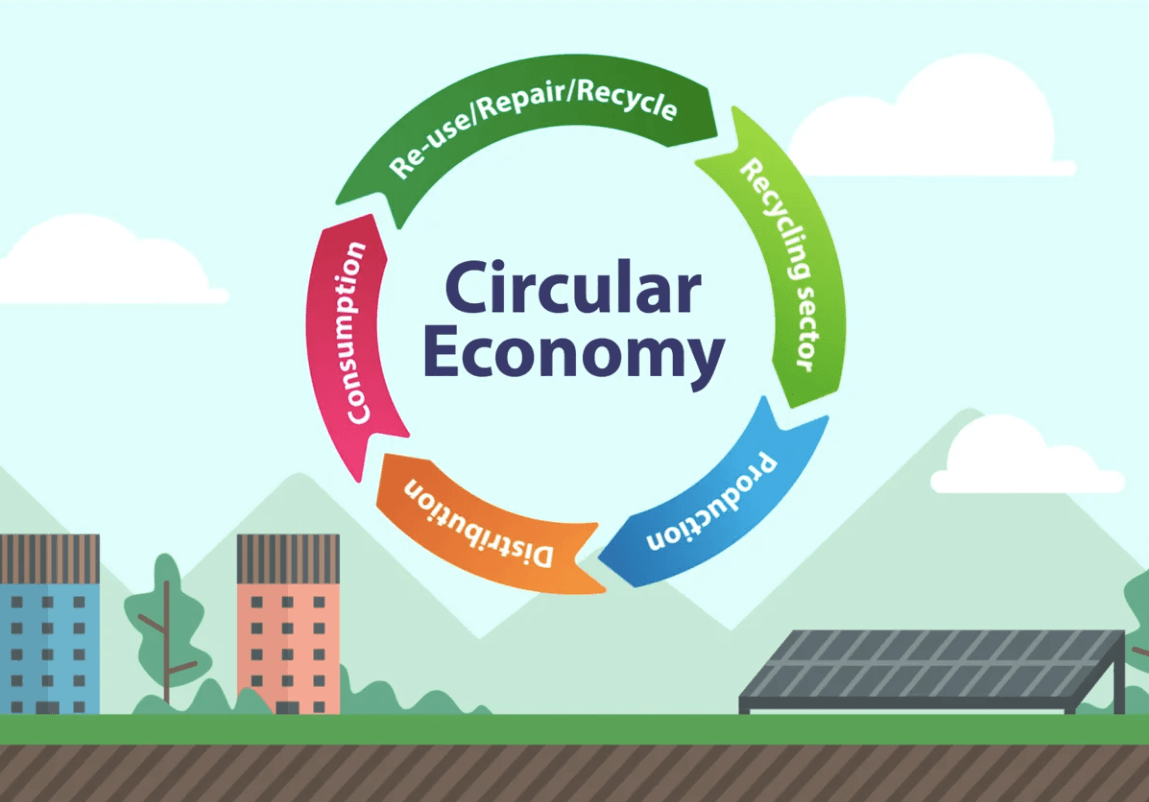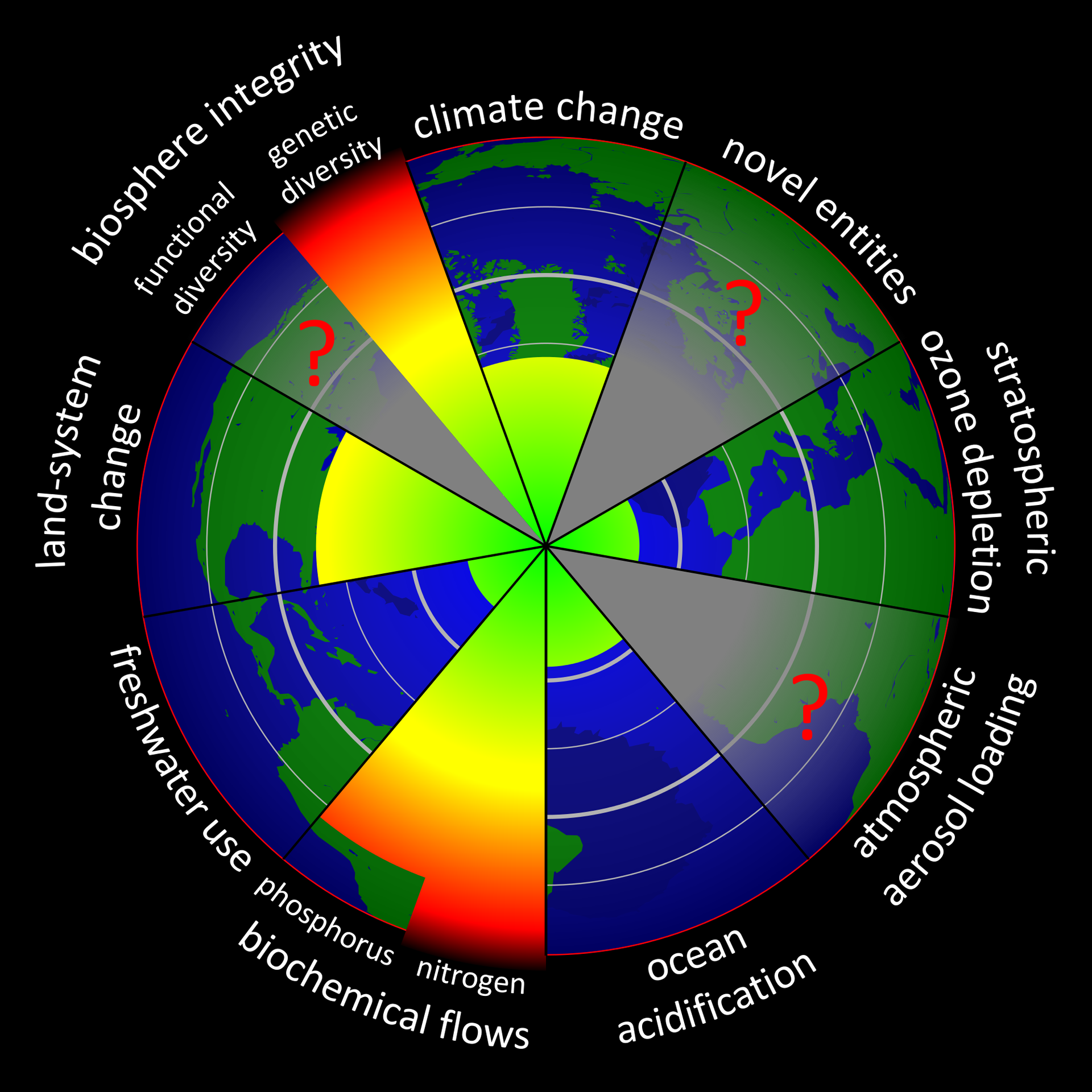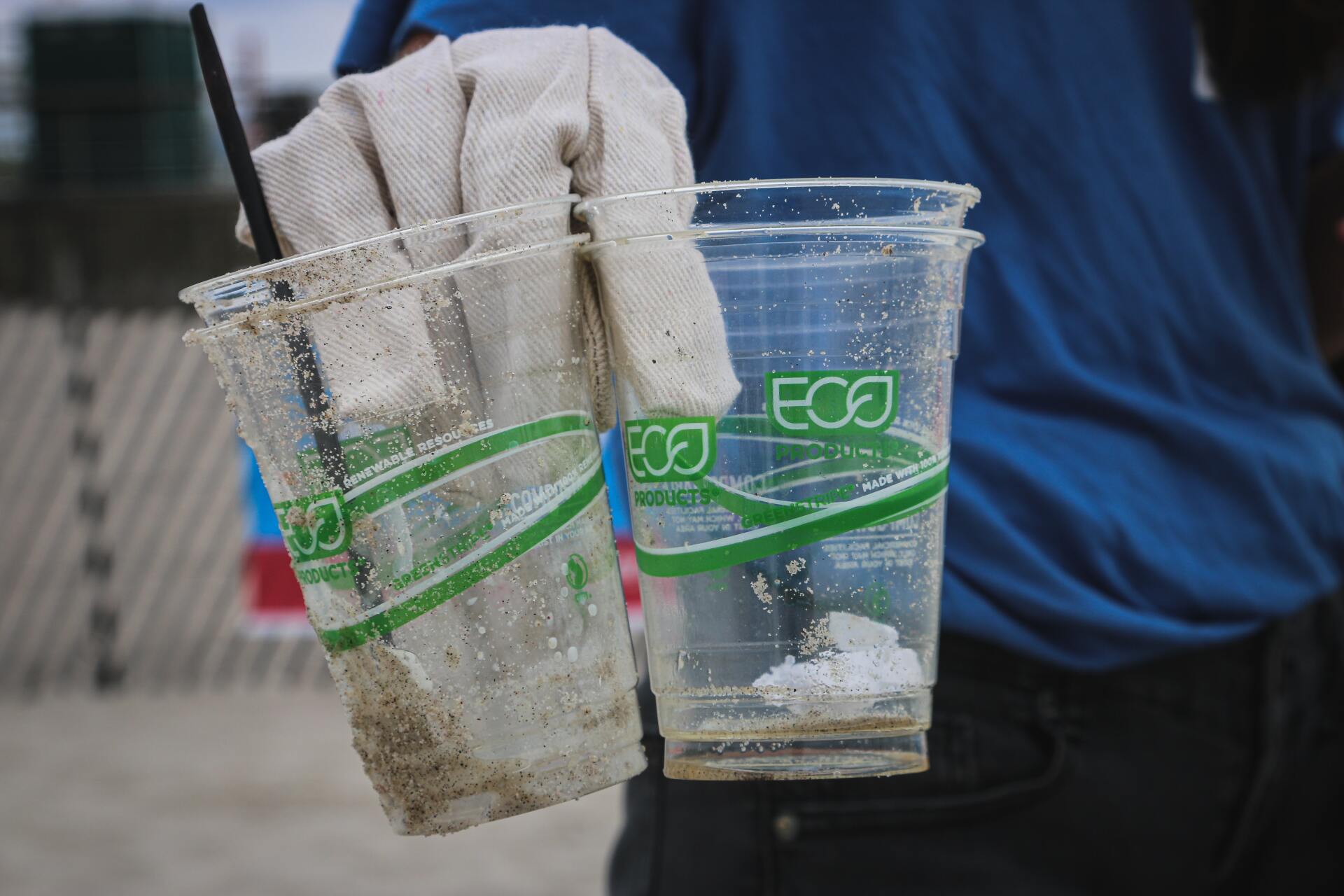How To Avoid A Greenwashing Nightmare: A Basic Guide for Good Brands.
Greenwashing creates challenges for eco-conscious consumers, genuinely green brands, and ethical marketers alike. And our planet ultimately bears the brunt of the damage it causes. So, what can good businesses do to avoid it?
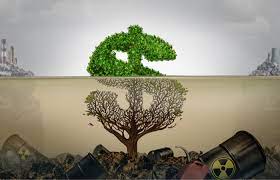
Original blog by Tash Morgan-Etty can be found here The below is a slightly updated version.
Over the last couple of years UK craft beer company, BrewDog, has come under fire from the media and the sustainability community at large after a group of 60 former BrewDog employees signed a detailed open letter claiming that they had been bullied and “treated like objects”. At the same time, they accused the company’s founders of chasing vanity projects like brewing an environmentally friendly beer with glacier water, 50% of which they say was discarded. This is in stark contrast to the firm’s marketing messages which constantly reiterate its commitment to equality, climate action, and other ethical values.
The company’s less than desirable reaction was to try and rally (or is that coerce?) current employees together to sign a response letter before issuing a formal remorseful PR response. They have since decided to have an independent party review their company culture and HR practices. However, in the eyes of many, the damage has already been done… The company’s golden reputation for operating sustainably and ethically is forever tarnished by its alleged inappropriate and unethical approach as an employer.
We usually think of greenwashing as a company’s intentional actions to exploit eco-conscious consumers by gaining eco-kudos without actually doing the work. But, as in BrewDog’s case, there’s often more to it than that.
Greenwashing can actually be quite complex and nuanced.
But you’re a good business operating ethically and sustainably. You’d never dream of doing anything dodgy, right? So why should greenwashing concern you?
There are two main business-related reasons:
1) As BrewDog has learned, it’s surprisingly easy to unintentionally fall into the greenwashing trap.
2) Greenwashing affects your customers’ perception of all brands, including yours.
So, how can honest ecopreneurs and green businesses avoid being labelled with this shady practice while also effectively marketing their message, encouraging brand loyalty, and growing sales?
The TL;DR is be authentic and transparent in your marketing.
Naturally, there’s a lot more to it than that. But, first, it's essential to understand why greenwashing is not a black and white matter.
What is Greenwashing in Marketing?
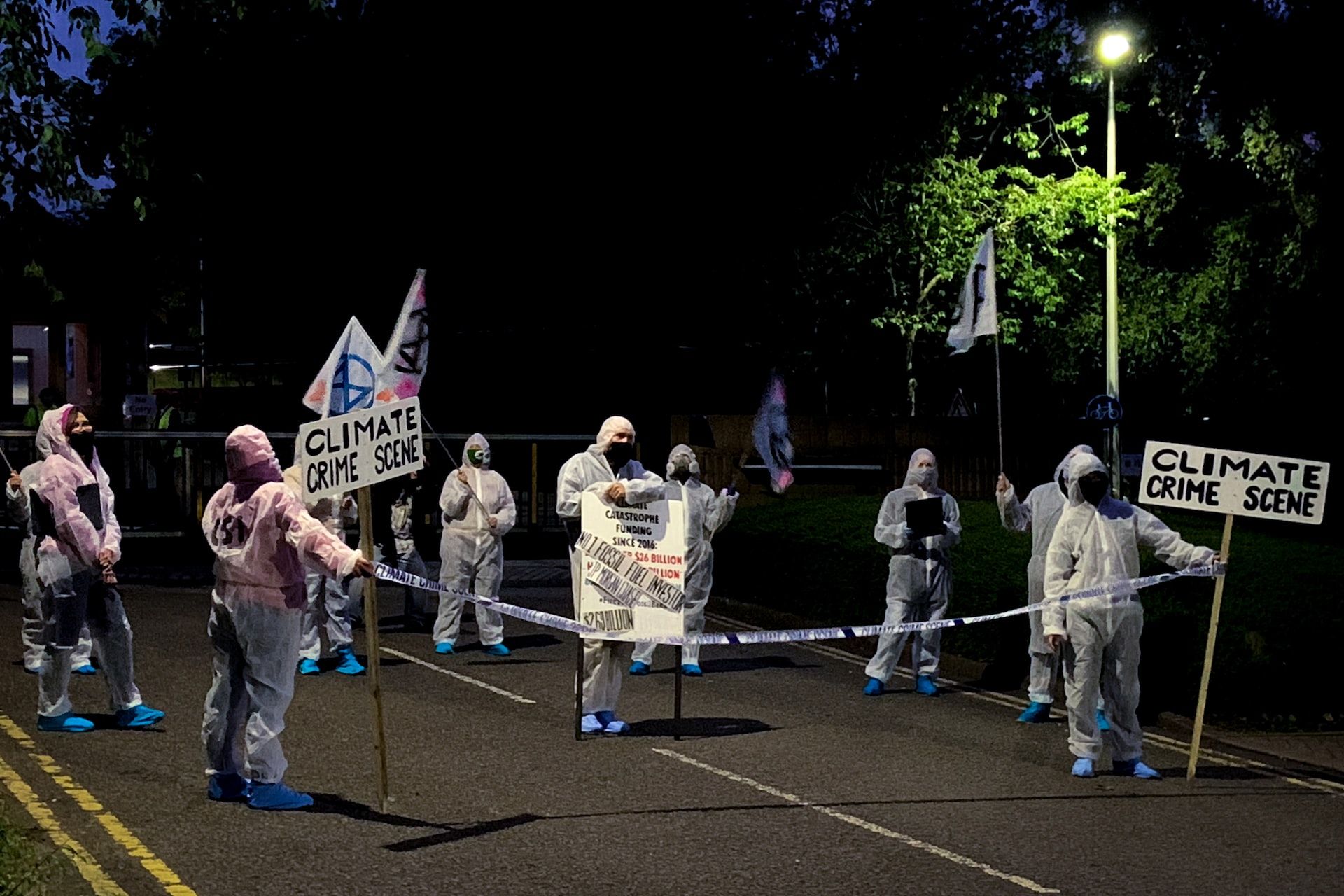
Off the back of their landmark complaint against BP’s advertising in 2019, Environmental lawyers ClientEarth worked with environmental investigators DeSmog to examine some of the world's biggest fossil fuel companies and uncover the truth behind their marketing. Their Greenwashing Files, published in April 2021, reveal rampant greenwashing and line these companies up for mass public scrutiny and significant reputational damage.
Maybe it’s mean, but we have to admit that part of us finds it pretty satisfying whenever corporate behemoths are caught waist-deep in slimy greenwashing claims.
Of course, like you, we’d rather they didn’t do it at all.
Fortunately, outright lies about environmental performance in a company’s marketing aren’t all that common. TerraChoice dubbed this overt lying the “sin of fibbing”. According to their research, it happens in less than 1% of greenwashing cases.
Most of the time, greenwashing isn’t an intentional communication strategy used to con unsuspecting stakeholders with “corporate disinformation” about the company’s practices or the benefits of their product or service. It’s also not necessarily about covering up bad environmental systems with claims about positive, eco-friendly performance.
Studies show that the majority of companies that greenwash are guilty of less obvious forms of it. And there is actually a wide range of misleading tactics that can be classified under the “greenwash” label.
It’s worth understanding what these are because it can be easy to make the same mistakes.
Here are just a few examples:
- When a business puts more resources into its sustainable marketing than its actual eco-friendly practices.
- When a business is inspired to use greenwashing marketing tactics by other companies without realising the dangers.
- When organisations don't make explicit green statements, but they do suggest eco-friendliness by using visual cues like leafy green imagery, craft paper packaging, or fake certification labels.
- When a company aligns itself with green organisations or causes without doing anything to change its own procedures or products.
- When a business’s sustainability values operate in a silo, separate from its corporate or HR values, e.g. BrewDog’s case.
- When a business takes the credit in their marketing for following standard environmental legislation.
- When an organisation is doing excellent environmental work but is funded by ‘dirty money’, e.g. big oil.
- When companies manipulate data for internal communications or reporting, e.g. to meet emission restrictions (here's looking at you, Volkswagen).
Then there are also situations when greenwashing isn’t deliberate at all. Sometimes it might not necessarily have been introduced by the company itself and may not even benefit the business or harm the environment. For example, greenwashing accusations may stem from the public’s unrealistic expectations of the brand or from a miscommunication by the media. In these cases, the business hasn’t done anything to mislead its audience on purpose and probably couldn’t be held responsible for the greenwash. Nonetheless, their reputation could be badly affected.
Sounds like a PR nightmare! And nobody wants to be in that boat, right?
No worries, we’ve got you covered with some solid suggestions on how to avoid greenwashing misconceptions below.
But before we dig into those, it's critical to understand how various stakeholders perceive greenwashing and what the knock-on effects can be for your brand.
How Does Greenwashing Affect the Consumer?

In a survey of consumers across 20 countries in July 2020, 72% said that companies behaving sustainably was more important to them since COVID-19.
Roughly 70% also stated that reducing their own impact on the environment had become more important since the Virus outbreak. More importantly, their positive intentions are followed by a willingness to take action. 46% of shoppers said they plan to change their behaviour and buy more from sustainable or eco-friendly brands.
This is fab news for sustainable brands and our planet, but it also means an increase in other businesses tapping into the eco-conscious market by jumping on the greenwashing bandwagon.
Sadly, but for good reason, this is fuelling high levels of scepticism among consumers and investors towards all brands’ eco-friendly claims. In fact, the recent Quilter Investors 2021 Global Outlook report revealed that greenwashing is a primary concern for 44% of ESG investors.
As a result, genuinely fair businesses are having to work at least twice as hard to gain the market's trust. Frustrating, or what!?
As public concerns over environmental concerns increase, the pressure on companies to take positive and visible action to support our environment is probably going to increase. Unfortunately, as a result, many more will be tempted to big-up their eco-efforts by greenwashing. The credibility of sustainable business, in general, is likely to be further damaged as a result.
Some consumers may even be put off buying eco-friendly items altogether as they simply can’t be bothered or don’t have the time to run their own due diligence on every single green product or service they purchase.
Can’t say we blame them, really.
But it doesn't end there. Other organisations are keeping a watchful eye on greenwashing developments. Ensuring that you keep on their good side is essential too.
Other Sceptical Stakeholders
Government, independent regulators, the media, NGOs, and protest groups are keeping an increasingly watchful eye over the environmental sustainability practices of businesses, both large and small.
And if they catch a whiff of anything even remotely greenwash related you could have a very serious reputational crisis on your hands.
Watch Dogs
With digital monitoring, gone are the days when businesses could get away with a few white lies or dusting dirty deals under the carpet. Now, companies are watched more closely than ever, and operational level considerations are expected to meet government standards for ethics and transparency, especially around greenhouse gas emissions.
In addition, the Competitions and Markets Authority (CMA) issued the Green Claims Code in 2022. The CMA is rigorusly policing the code and has taken action against some leading fashion brands in 2022.
And government aren't the only watchdogs.
Independent regulators like the National Advertising Division (USA) and the Advertising Standards Authority (UK) keep a sharp eye on companies’ public messaging. Truth in Advertising’s list of brands being investigated by the NAD and ASA for greenwashing in April 2021 gives a good indication of how serious they are about monitoring communications.
The standards of these authorities vary by location and are being updated regularly. So it's well worth setting a reminder for every quarter to fully understand what you need to comply with and how you need to comply.
The Media
Marketing has less influence over the media than it had in the past, but the media still provide a valuable feedback loop for companies on public perception. And, of course, if that perception is negative, newsrooms will pick that up and run with it. So, it’s important to keep an eye on trends in your sector across all media (not just social media).
NGOs and Pressure Groups
In the interests of their cause and their followers, these organisations also monitor whether companies “walk the talk” or not. They tend to look for discrepancies between the impact of your products and services, what you’re investing in, whichever environmental initiative you are committed to supporting, and what you’re communicating to your stakeholders. Extinction Rebellion’s recent attacks on major global banks are a prime example of the actions collectives are prepared to take to be heard.

Greenwashing is in The Eye of The Beholder
Some see the protest actions of organisations like Extinction Rebellion, Greenpeace and PETA as excessive, in bad taste, and problematic for those who could have otherwise been allies to their causes.
So, where’s the disconnect? Why does one person react to greenwashing by smashing a bank’s windows and another simply stop using the banks’ services?
Simple. It’s all down to perspective. Everyone has a different idea of what greenwashing means and what they should do about it.
To better understand the different notions of greenwashing your audiences might have, it's helpful to consider BSR and Futerra’s 2009 cognitive model for how stakeholders decide whether a claim is greenwash or not. According to them, people combine all of the following factors to figure this out for themselves.
Core Message
What has the company actually done? How is it better for the environment?
Viewer’s Criteria for Environmental Responsibility
What does the viewer consider to be responsible? Is it about generating zero waste, having a comprehensive climate change strategy, or developing only products that tackle sustainability issues?
Viewer’s Level of Trust in Corporations
Does the viewer tend to trust corporate messages in the first place? Does the viewer trust your company? Does the viewer want to believe or disbelieve the claim?
Company Reputation
Does your company already have a reputation of being responsible? If not, the viewer may assume you are greenwashing unless proven otherwise.
Business Environment
What’s going on in the wider environment and media? Have there been recent negative corporate incidents, particularly in your industry? Is trust in business high or low?
Tone
Is the claim factual, providing context, and supported by measurable data? Is the message humble or self-aggrandising? People are often sceptical of boasting and lofty claims.
Understanding and Preventing Greenwash: A Business Guide, Horiuchi et al., BSR & Futerra, 2009
With sustainability high on the global agenda and audiences becoming a lot more educated about the environmental impact of products and services, the lens your audience views your brand through is more critical than ever.
Simply stating that your brand is “eco-friendly” is highly likely to fall short of the expectations of even the most recent eco-conscious converts. And, even if you are operating ethically and proactively working to support the natural world, you could still face fierce scrutiny from fanatics.
So, what can you do to gain your stakeholders’ trust, strengthen your brand, increase your impact, and prevent greenwashing accusations?
How to Avoid Greenwashing in Your Marketing Efforts
First, a Little Love for the Newbies
We’ve established that greenwashing means different things to different stakeholders. This is also true for business leaders.
An experienced sustainability consultant, for example, would have a different perspective on greenwashing compared to a small business owner who is only just starting to pivot from using mainstream practices and move towards operating with eco-sensitivity.
So, a few of the tips below might seem, to some, to be stating the obvious. I’m including them anyway.
Together they provide a helpful checklist for all green business leaders. But, more importantly, we need as many businesses as possible to join us on the journey towards environmental stability and recovery. And everybody has to start somewhere.
So, if you’re new to this greenwashing malarkey, welcome! We are stronger together. Let’s do this…
Liar, Liar, Pants on Fire
First up: tell the truth.
Obvious? Well, not always.
It's vital to make 100% sure that your marketing team is clear on what promises they’re allowed to make on behalf of your products and services and what might constitute a false claim. This is especially important if you’re working with a third-party marketing agency that may or may not have the relevant green marketing experience in your industry or with your niche product.
Exaggerating what your business does for the planet can bite you in the bum quicker than you can say “bye-bye investors”. Making irrelevant, outright false, or unsubstantiated claims about your brand will get you into trouble even faster.
Put together a simple “yes/no” checklist if needs be. The extra effort could save you a lot of stress in the long run.
It’s About the Journey, Not the Destination
Effective sustainability isn’t achieved overnight. Consumers and other stakeholders are happy to accept that as long as you share your journey with them.
Don't pretend to be perfect from the start, and you will have their support. Even when things go wrong, or a mistake is made.
Also, communicating the areas you’ve identified for improvement, your commitment to improving them, and your process as it happens, allows you to adjust your green goals and strategies according to consumer and public feedback.
Know Your Audience
Have you taken the time to engage stakeholders for feedback on your environmental performance, your green marketing, and how these relate to the rest of your business?
It might be tempting to charge ahead and skip this step, but you could be losing a lot of value if you do.
Genuinely listening to the expectations your staff, suppliers, customers, NGOs, and the community have of your environmental and ethical impact, and the accuracy of your marketing messaging, allows you to make the necessary adjustments to avoid landing your brand in hot water. It also goes a long way in building trust and credibility.
I think it’s safe to say BrewDog’s CEO James Watt has learnt this lesson the hard way.
Is Your Sustainability in a Silo?
As we’ve seen with BrewDog, greenwashing allegations can stem from a lack of alignment between your green marketing and other functions within your company.
By disrespecting their employees while crowing about their BCorp status (now since ended) and buying a forest in Scotland, BrewDog’s leadership has failed to see the contradiction between their eco-friendly agenda and their toxic company culture.
If there are any inconsistencies between the impact of your green initiatives and any other internal procedures or public policy positions, then it’s time to encourage cross-departmental collaboration and bring all aspects of your company in line with your green messaging.
Trade-Offs Aren’t Cool
Corporate advertising giant WPP recently came under fire by the Clean Creatives campaign for claims it was committing to going "beyond the required carbon reductions outlined in the Paris Agreement." Their statement seems noble enough until you realise that WPP's key clients include some of the world's largest fossil fuel companies. So, irrespective of how far WPP goes to reduce its carbon footprint, the agency’s efforts pale into insignificance in the face of the millions of tons of carbon its clients are emitting annually.
Their case is extreme, but if your company has any hidden interests (however large, small, or unintended) in unsustainable practices, these trade-offs are likely to result in finger-pointing and greenwashing complaints.
So, do your homework. Know every aspect of your supply chain and production, including those of partners and suppliers, and triple-check the source of any investment or income you receive. If any of these are in conflict with what you’re communicating, then you’ll hopefully have the opportunity to correct it before it’s too late.
Impact is Everything
Understand your business’s impact. By measuring your energy consumption, waste emissions, and other environmental factors, you’ll not only be able to work towards improving them, but you’ll be able to communicate your progress accurately and honestly. This is part of sharing your journey (described above) and goes a long way to building trust among all stakeholders.
Being unsure about what your impact is can lead to telling half-truths about it. And greenwashing studies have shown that half-truths can cause just as much reputational damage as telling outright lies.
Only honest, accurate, and impact-driven green behaviour has the positive effects on brand reputation we all want.
Embrace Transparency
“Companies who do not understand sustainability and transparency will be left behind, and the ones who do will take over.” - Mikael Eydt, Beyond Leather
Do you publicly reject unethical and unsustainable practices like animal testing, sweatshop-based production, and the destruction of ecological resources for raw materials? Then you should also be prepared to share the relevant internal business records that reflect your avoidance of these practices.
Why? Conscious consumers want to trust you. To do that, they need to be sure the products and services they buy from you aren't harming other people, animals, or the environment, and that they are fulfilling the promises you've made.
By making it easy for them to understand and check your green claims, you make it easy for them to make a quick buying decision.
Also, it's not enough to run one campaign dedicated to sustainability and then go quiet. By consistently communicating open and honest information in easily digestible formats, you’ll engage your audience and grow their trust in your brand.
In a recent interview with Vegconomist, CEO and Co-founder of the Danish start-up Beyond Leather, Mikael Eydt, explained how the company plans to integrate transparency into all development and production aspects of their apple-waste-based sustainable leather alternative "Leap". To them, transparency means publishing all of the ingredients they use, where they originate from, and where they’re produced. They also plan to publish a full life cycle analysis that indicates areas for improvement and how they’ll tackle those. Hopefully, if Beyond Leather achieves this, it will put added pressure on the fashion industry to turn over a transparent leaf.
Rock Your Data
If you’re advertising your product as compostable, biodegradable, or eco-friendly in any other way, can you provide data to prove this?
Having data that verifies your impact is one of the best ways to avoid greenwashing complaints.
Your marketing team will thank you because it makes communicating the green advantages of your product or service effectively so much easier. Your PR team will love you for it because if the validity of your claims is ever questioned, they’ll have solid evidence to back you up with.
There’s no point in sharing your data if your audience doesn’t understand its significance, though. So, to ensure that your numbers are communicated clearly, it’s well worth investing in formats like animated explainer videos or infographics and combining them with simple jargon-free copywriting that’s easily understood.
Add Third-Party Proof
Credible third-party certifications can make choosing eco-friendly and ethical products and services quicker and easier for the consumer. They act as a verification of your sustainability claims, improve your brand’s trustworthiness, and allow you to learn from the certifier’s evaluations of your business practices.
But! Credibility is key.
In 2015 Water and Sanitation Health (WASH) sued the Rainforest Alliance for misrepresenting how earth-friendly its certified products actually are. This case highlights how careful we have to be when trusting certified labels, both as consumers and businesses. So, please take the time to research your chosen third-party authority and make sure they aren’t in any danger of committing greenwashing blunders themselves. Their mistakes have the potential to reflect poorly on your brand.
A reputable certification option designed specifically for small businesses, social enterprises, and charities in the UK, is the Responsible Business Standard. It’s been developed by the Organisation for Responsible Businesses (of which we are proud members) and validates good social and environmental practices supported by a solid business foundation. The full certification standard works to drive best practice internally, and act an indication to external audiences that the company is doing its best to solve societal challenges. But best of all, the RBS certification process avoids mind-boggling jargon and a “one-size-fits-all” approach. This makes it ideal for all organisations, even micro businesses with no employees.
Other options for third party proof points are consumer reviews, testimonials, or case studies. If your loyal fans can provide enthusiastic feedback on the quality of your green products, it will go a long way in building the respect and trust of your audience towards your brand. An experienced copywriter can help you capture convincing case studies that are not scripted and come across as genuine and organic.
Fake Labels and Pretty Pictures
Brands, large and small, are marketing their products with fake green guarantees and organic-inspired packaging. They’re using “sustainably sourced” labels and “recyclable” badges that look like third-party certifications but that are made up. Numerous companies are also, quite literally, washing their products green with pretty banana-leaf pictures, brown kraft paper wrapping, and whisps of rough twine.
Why? Because it works. Or it used to anyway.
Consumers are cottoning on to this fakery, and many won't stand for it much longer. So be ready to show your stakeholders proof of any green claim you make on your packaging or elsewhere in your marketing.
And we’ll challenge you to go one better: consider creating product and packaging designs that don’t follow eco-friendly conventions. Mast Chocolate’s recent new Met Collection, for example, proves that sustainable packaging doesn’t have to look crunchy to be cool!
“Humility Is the Surest Sign of Strength”
Nobody likes a self-righteous braggart.
The same applies to companies that brag incessantly about their green credentials or exaggerate to make it sound as if they’re solely responsible for saving the planet. Consumers, the media, and other stakeholders are often automatically suspicious of brands that do this.
On the other hand, they tend to favour and support businesses with honest green messaging and a down-to-earth tone in their copywriting.
By confidently telling the story of your impact as honestly and transparently as possible, you show that your brand is trustworthy, even if it isn’t perfectly sustainable just yet.
Positivity is Powerful
Eco-anger, eco-depression and eco-anxiety are on the rise. According to a survey published in 2020 by researchers at Yale University, over 40% of Americans felt “disgusted” or “helpless” about climate change.
So, using fear and guilt tactics to sell your service or product is not only likely to be off-putting but can also be misconstrued as irresponsible towards peoples' mental health. On the other hand, using a positive tone and focussing on empowering your audience to take steps towards living a sustainable future is far more likely to encourage the proactive mindset we all need to tackle our climate and biodiversity emergencies.
Be Specific
As they say, “assumption is the mother of all f@%k-ups.” Allowing your audience to make assumptions about your environmental impact can easily lead to accusations of unsustainable behaviour.
The best way to avoid this is to be specific by:
- Avoiding vague language, generalised terms, or green buzzwords.
- Making absolutely sure you’re able to back up your claims with clear evidence.
- Using marketing and communication providers who have a clear understanding of sustainable terminology so that they don’t unintentionally send out false claims on your behalf.
Facts Not Fluff
OK, so here’s our word-nerd soapbox moment… Crowbarring every conceivable green buzzword into your copywriting is NOT going to do your brand any favours! To make an intelligent buying decision, consumers need facts, not fluff.
Yes, market your product’s environmentally friendly features, but make sure there’s also room to tell your brand’s story in a relevant and relatable way. Relevant to your audience, that is.
Highlight the benefits of your product that will mean the most to them and that solve their problems. Share your sustainability journey with progress updates on your blog or social media. Provide exceptional value through useful information that will help them live more sustainably and improve their lives. This could be in the form of a monthly newsletter or a downloadable digital resource.
Ultimately, these strategies will build far stronger trust and loyalty for your brand long-term than obsessing over the latest vegan keyword ever will.
Last Words
Of course, the biggest problem isn’t that greenwashing misleads goodhearted consumers or that it wastes marketing airtime. It ultimately has serious implications for our planet, with environmental problems either stagnating or getting worse.
With this in mind, and as consumers rapidly become more eco-savvy, honesty, accountability, and transparency will become standard success metrics for all companies’ marketing. Not just the intentionally sustainable ones.
In the meantime, businesses claiming to be eco-friendly and ethical are first in the firing line when it comes to greenwashing accusations. However, following the tips outlined above can help in safeguarding your business’s credibility.
So, let’s recap:
- Tell the truth. Avoid lying in any form.
- Share your journey. You don’t have to be perfect from day dot.
- Know your audience and their expectations.
- Integrate sustainability across your business’s functions.
- Eliminate hidden trade-offs.
- Understand your business’s impact.
- Embrace transparency.
- Rock your data.
- Add third-party proof.
- Don’t use fake labels and think beyond predictable green packaging.
- Bragging is off-putting. Rather be humble.
- Avoid fearmongering and try to be positive wherever possible.
- Be specific.
- Use facts, not fluff. Try not to use ubiquitous green buzzwords.
- Use an eco-conscious marketeer.
Using green marketing suppliers, copywriters included, who understand how to clearly communicate the impact of your sustainability efforts is a very smart investment. This takes a lot of the headache out of ensuring that consumers and other stakeholders understand your messaging and eco-credentials and won’t feel the need to question them.
Wamt to hear more?
Click on the button below


